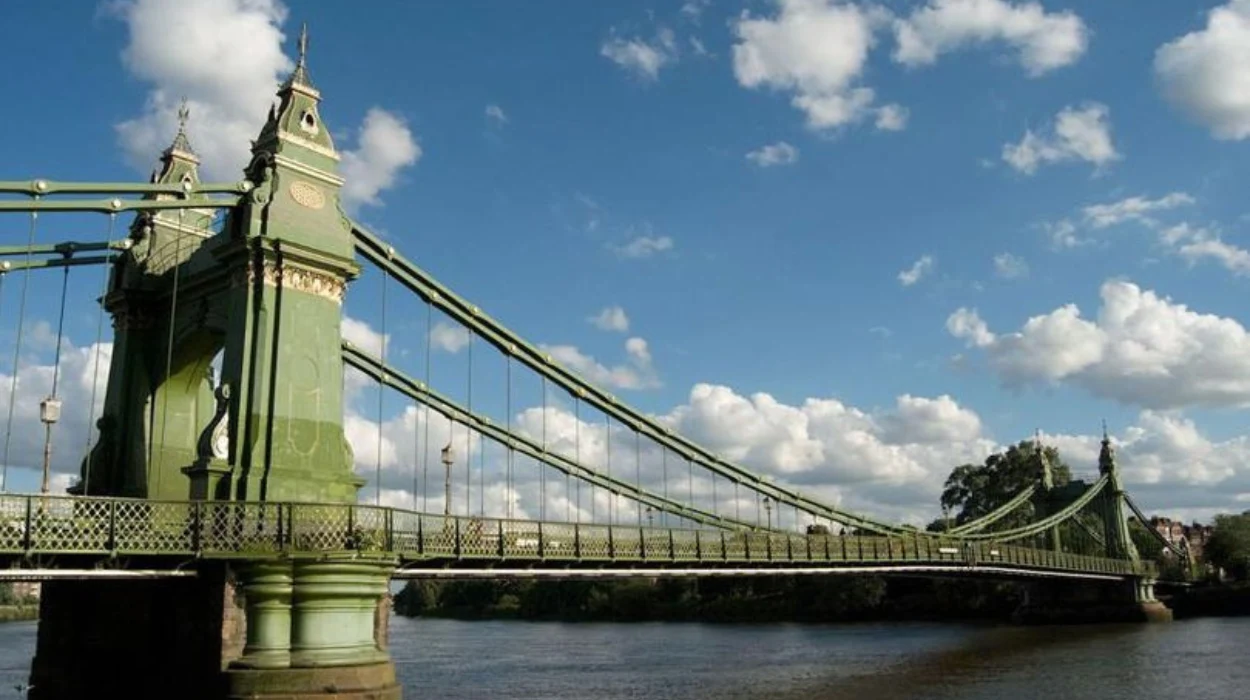Hammersmith And Fulham (Parliament Politics Magazine) – Hammersmith and Fulham council demands £20.7m from the government for Hammersmith bridge repairs but it is uncertain if they’ll agree to cover the costs.
Since the Grade-II* listed crossing was closed in 2019 and a financing settlement in 2021 specified that the expenses would be divided three ways, Hammersmith and Fulham Council claims to have spent around £48 million on stability and pre-restoration work.
However, according to a council report, the Department for Transport (DfT) and Transport for London (TfL) have contributed £8.3 million and £2.9 million, respectively, to the £48 million spent till now, and the council hopes to recover some of its expenses.
A spokesperson for the DfT said: “The department has actually provided £13m towards the bridge so far, but Hammersmith and Fulham’s position is that only £8.3m of this is directly related to the stabilisation and restoration costs incurred by the council.
So it appears that complications around what each party has spent so far and what they should be expected to pay could hamper the council’s efforts to get the £20.7m it wants at this stage.”
Will the government and TfL agree to pay the £20.7 million for Hammersmith Bridge repairs?
TfL and the Department for transport (DfT) have both given the Local Democracy Reporting Service (LDRS) vague responses over the £20.7 million number mentioned by Hammersmith and Fulham; yet, it is believed that the DfT has not yet been formally asked to reimburse the expenses.
The transport authority has been assisting Hammersmith and Fulham and will keep collaborating with the DfT to restore the bridge, according to a TfL representative.
TfL also cited statistics showing that, in addition to helping the council create plans for renovations, it has contributed little less than £3 million to stabilizing efforts. It claims to have spent £16.7 million in this capacity on feasibility studies, assessments, surveys, inspectors, designs, and other related issues.
The 138-year-old bridge that connected Barnes and Hammersmith was closed to all users in August 2020 and to cars in April 2019.
This was brought on by concerns about public safety following a finding of microfractures in its pedestals. Since then, it has reopened to river traffic, cyclists (who must dismount from their bikes), and pedestrians.
The estimated cost of repairing and rebuilding the bridge has increased significantly since it was closed, and it was £250 million last year.
The number of additional stages of work required to finish the bridge is unknown. The bridge’s owner, Hammersmith and Fulham, has stated that a toll would be necessary to pay for its share.
It has been reported that the DfT considers that any solution to Hammersmith Bridge will necessitate what it considers to be a suitable cost-sharing arrangement amongst partners because of the difficult financial situation. Any further funding consideration is dependent to a cost-sharing and engineering agreement.
Why is approval for Hammersmith Bridge repair still pending?
In December 2022 and formally in March 2023, the council submitted the previous government with their business case detailing intentions to repair and reopen the bridge. Approval is still pending.
Citing the expenses it claims each party has already paid, officers write in a report for the Cabinet meeting scheduled for next week (February 10): “The council is therefore due a further total of £20.7m from DfT and TfL and is requesting that the previously agreed contributions are paid up in full.”
The report also referenced the need for a toll if the council is to fund its share. It read: “Despite the relevant government minister expressing support for the council’s use of a toll or road user charging scheme to fund its contribution, support has not been forthcoming to date from TfL and/or DfT.”
A DfT spokesperson said:
“The London Borough of Hammersmith and Fulham is responsible for the operational and maintenance costs of the bridge as the asset owner.
We continue to work closely with the London Borough of Hammersmith and Fulham and Transport for London on exploring options for the future of the bridge and the department has provided £13m of funding towards the project so far.”
Any capital programmes such as Hammersmith Bridge are expected to be made in the context of Chancellor Rachel Reeves’s Spring Spending Review.
A TfL spokesperson said: “We have been actively supporting the London Borough of Hammersmith and Fulham and we will continue to work closely alongside the Department for Transport, the borough and other stakeholders on the Hammersmith Bridge Taskforce to agree the right solution, which includes ongoing discussions on how future work on the bridge might be funded.”
A spokesperson for the council said that they meet regularly with DfT and TfL and expect them to meet the agreed contributions.
Simon Lightwood, Labour’s Minister for Local Transport, called a meeting of a Hammersmith Bridge taskforce that had not convened in three years last week.
The discussion was described as “constructive” by Sir Sadiq Khan’s Deputy Mayor for Transport, Seb Dance, according to the Local Democracy Reporting Service (LDRS).
Andrew Slaughter, the Labour MP for Hammersmith and Chiswick and a member of the taskforce, wrote in local publication Chiswick W4: “At the meeting we narrowed down the options for the future of the bridge, agreed to look at cheaper ways to repair it and to get up to date figures on the impact on traffic using other roads and bridges (including Chiswick and Kew) in the area. We will meet again as soon as this information is assembled.”


